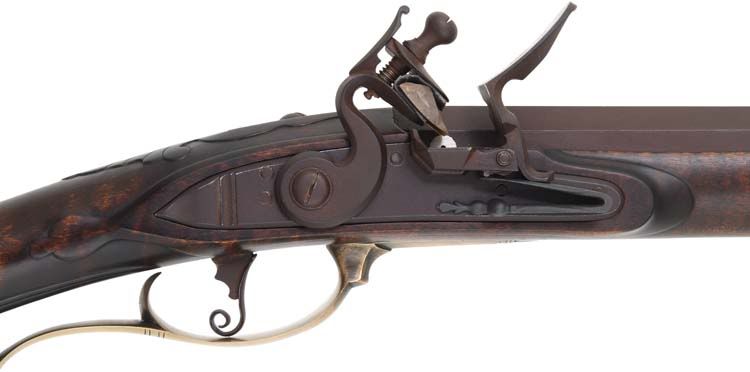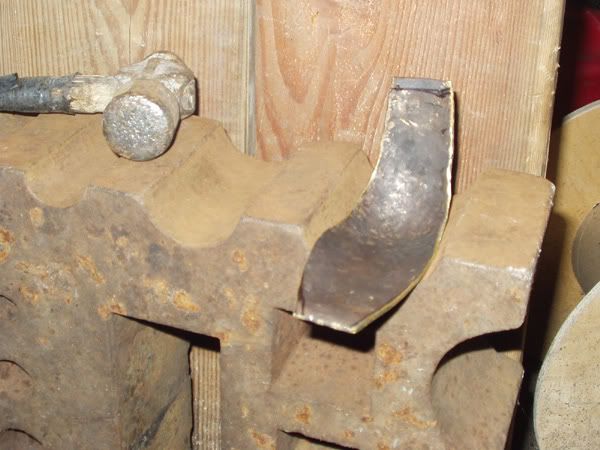I can't imagine anyone taking all the time needed to " cold forge" anything! Have you ever seen a ring made from a Quarter( silver back in the day), that had a hole drilled into its center, and then a steel rod inserted into the hole. After that a small hammer is used to gently tap the outer edge of the quarter to beat the silver alloy down to make the ring. If you hit the metal too hard, it deforms, and ruins the ring, which often shows the serrations on the edges in the middle of the ring.
That is cold forging.
Cold forging brass, that is NOT repeatedly annealed( heated to red hot, and then immediately dunked in cold water to soften the brass) will often cause cracks and splits, and a ruined object. Pipes can be made from flat ( or sheet ) stock of brass, cut to width, and the shaped with the use of a vise, and rods. SOME Buttplates- but not all--- can be made from sheet brass, or "german" silver. ( See Northwest Trade guns, and the butt PLATES typically put on these guns for examples of plates made from flat stock.)
But, most of the original buttplates are cast, and filed to shape, so that the entire process of putting a buttplate on a stock can be done efficiently and economically.
Trigger guards are the other object that can be cast, or forged from sheet brass. However, the forged brass guards often are made in pieces that have to be brazed together when completed. If made from steel, then the pieces are welded. Casting trigger guards was done to produce a very low cost item. Hot forging is the next fastest way to produce these kinds of items, with their curves, and varying lengths.
Toe plates, side plates, escutcheons, barrel hangers, are all examples, in addition to the pipes, of items that can be hammered or made out of flat stock. Even muzzle caps of some kinds can be made from flat stock, provided you have the tools to solder( silver solder) or braze the parts together. Hershel House has a video, I believe, on how he makes all the parts of a gun from scratch, but I believe he is HOT FORGING much of the "architecture" for the gun, and NOT cold forging the pieces.






